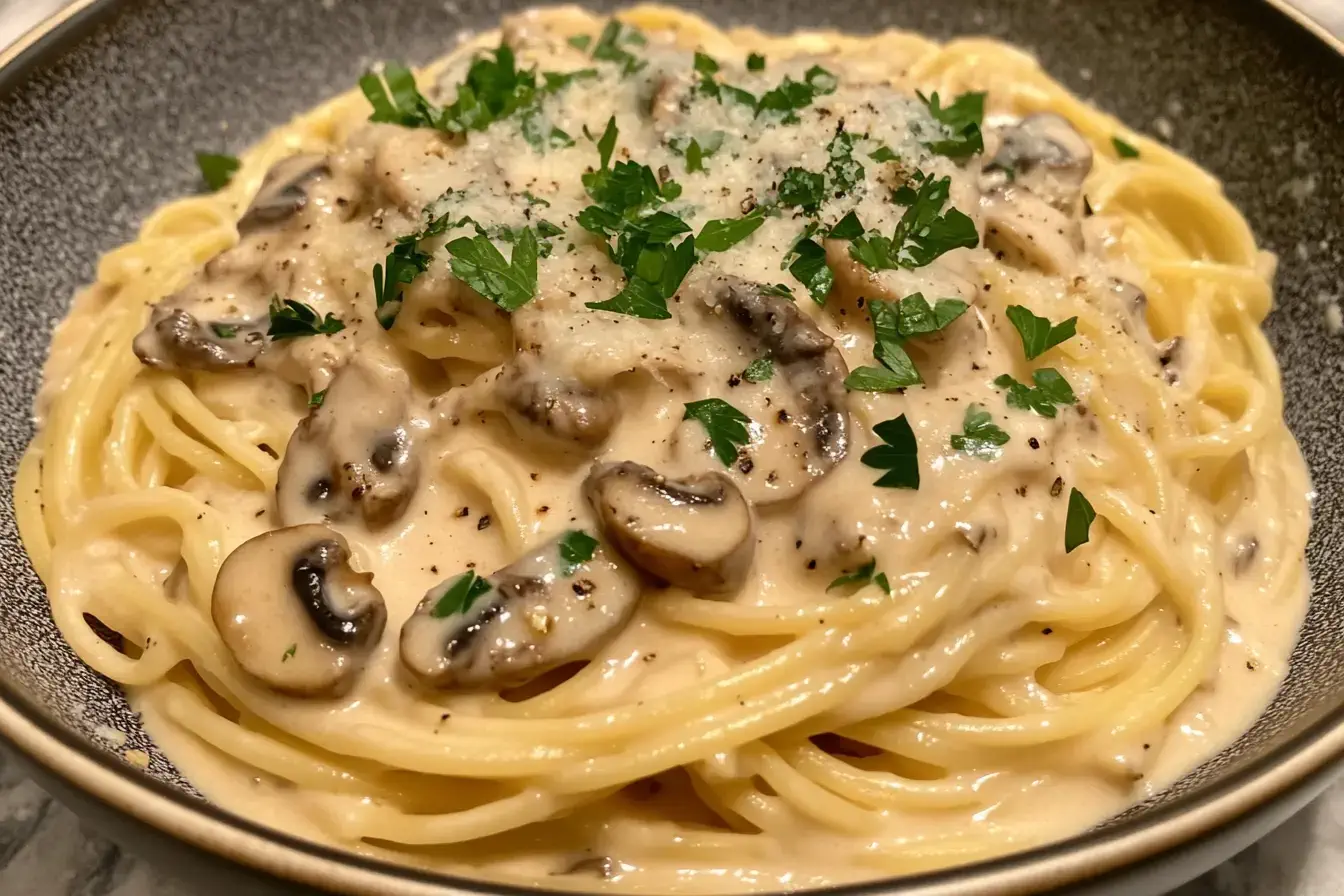Table of Contents
Ditali pasta may be small in size, but it carries a world of flavor and versatility. Whether you’re a passionate cook or just exploring the culinary wonders of pasta, this guide will take you through everything you need to know about this pasta shape.
Understanding This Popular Italian Pasta

Italian classic is a small, tube-shaped pasta often described as “thimble-sized.” Its name, derived from the Italian word “ditale,” means “thimble,” which perfectly describes its unique appearance.Italian classic is a star in soups, salads, and even creamy dishes because its compact size holds flavors exceptionally well.
“Think of ditali pasta as the quiet achiever of the pasta world—humble in size, but capable of creating culinary magic.”
Tracing the History of This Iconic Pasta Shape
Italy is the birthplace of this pasta shape, specifically in the southern regions like Campania and Sicily. This pasta was originally used in hearty soups and stews, where its small size allowed it to blend seamlessly with other ingredients. Over time, it became a staple in Italian kitchens, loved for its adaptability.
How This Pasta Compares to Other Shapes
Ever wondered how ditali compares to similar shapes like macaroni or ziti? The difference lies in the details. Ditali is shorter and has a slightly larger diameter, making it a perfect fit for soups like minestrone. Unlike macaroni, which is curved, ditali’s straight, hollow shape makes it a better choice for chunkier sauces and fillings.
Tips for Cooking It Just Right
Cooking Italian classic may sound straightforward, but a few tweaks can elevate it from ordinary to extraordinary. Start with a generous pot of salted water—don’t be shy with the salt, as it’s your first layer of flavor.
Step-by-Step Cooking Instructions
| Step | Description |
|---|---|
| 1 | Boil water in a large pot with 1 tablespoon of salt for every 4 quarts of water. |
| 2 | Add the ditali pasta and stir to prevent sticking. |
| 3 | Cook for 8-10 minutes or until al dente. |
| 4 | Drain the pasta but reserve 1 cup of pasta water for sauces. |
| 5 | Toss the pasta with a little olive oil if not serving immediately. |
Common Mistakes and How to Avoid Them
- Not salting the water enough: Pasta absorbs water as it cooks, so under-salted water means bland pasta.
- Overcooking: Keep a close eye on the timer to maintain the perfect bite.
- Skipping the stir: Stirring the pasta prevents it from clumping, especially in the first minute of cooking.
Must-Try Recipes Featuring This Pasta Shape
Italian classic shines in an array of recipes. From comforting soups to vibrant salads, there’s no shortage of inspiration.
Classic Minestrone Soup with Ditali
Minestrone soup is a hearty, vegetable-packed dish where Italian classic takes center stage. Its tiny tubes absorb the flavors of the broth, creating a satisfying bite.
| Ingredient | Quantity |
|---|---|
| Ditali pasta | 1 cup |
| Vegetable broth | 6 cups |
| Mixed vegetables (carrots, celery, zucchini) | 2 cups, diced |
| Canned tomatoes | 1 can (14 oz) |
| Herbs (basil, thyme) | 1 tsp each |
Creamy Ditali Pasta with Mushrooms
If you love creamy pasta, try this mushroom ditali dish. The pasta’s small size ensures every bite is packed with creamy goodness.
Mediterranean Ditali Pasta Salad
A fresh take on pasta salad, this Mediterranean-inspired dish combines ditali with olives, feta cheese, cherry tomatoes, and a zesty lemon dressing.
Why It Can Be Part of a Balanced Diet
Despite its comfort food status, this pasta shape can be part of a balanced diet. Moderation is key, and pairing it with nutrient-rich ingredients can create a wholesome meal.
Nutritional Profile of Ditali Pasta
| Nutrient | Per 100g |
|---|---|
| Calories | 131 kcal |
| Carbohydrates | 25g |
| Protein | 5g |
| Fiber | 2g |
| Fat | 1g |
Can Ditali Pasta Fit into a Healthy Diet?
Absolutely! When paired with lean proteins, vegetables, and healthy fats, Italian classic can contribute to a balanced meal. Consider whole-grain versions for an added fiber boost.
Ready to explore more Italian classic wonders? Let me know if you’d like me to continue with the next part of this delicious guide!
Ditali Pasta in Italian Cuisine
Ditali pasta is more than just an ingredient—it’s a cultural symbol in Italian cuisine. This petite pasta brings warmth, tradition, and versatility to a variety of dishes. Whether it’s a rustic family recipe or a refined gourmet dish, ditali pasta has a special place in Italy’s culinary history.
Why Italians Love Ditali Pasta
Italians adore this pasta shape for its simplicity and versatility. Its small size allows it to complement a wide range of recipes, from hearty minestrones to creamy sauces. Many Italian families pass down recipes that feature ditali, making it a nostalgic comfort food.
“For Italians, ditali pasta isn’t just a meal—it’s a cherished piece of their heritage, blending history and flavor in every bite.”
Famous Italian Dishes Using Ditali
One of the most celebrated dishes featuring ditali is Pasta e Fagioli (pasta and beans). This traditional soup combines ditali with creamy beans, aromatic herbs, and a savory broth, making it a timeless classic.
Other popular dishes include ditali with fresh pesto and sun-dried tomatoes or baked ditali casseroles topped with bubbling cheese. The possibilities are as endless as they are delicious!
Pairing Ditali Pasta with Sauces
Finding the right sauce for your ditali pasta is like pairing a fine wine with a gourmet meal. The pasta’s small, hollow shape makes it perfect for soaking up flavors, ensuring every bite is packed with deliciousness.
Best Sauces for Ditali Pasta
Ditali pasta pairs beautifully with both light and hearty sauces. Here are some top picks:
- Tomato-based sauces: A classic marinara or arrabbiata clings to the pasta, delivering bold flavors.
- Creamy sauces: Alfredo or mushroom cream sauce works well with ditali’s bite-sized texture.
- Brothy bases: Light chicken or vegetable broths highlight the pasta’s ability to complement soups.
Creative Sauce Ideas to Try
Looking to mix things up? Try these creative sauce combinations with Italian classic:
- Garlic Lemon Butter: Toss ditali in a simple sauce of garlic, lemon juice, and melted butter for a zesty dish.
- Pumpkin Sage: A creamy pumpkin puree blended with sage and Parmesan adds a cozy autumn twist.
- Herb Pesto: Experiment with unconventional pestos like arugula or walnut pesto for a fresh take.
Buying and Storing Ditali Pasta
Not all pasta is created equal, and ditali is no exception. Choosing high-quality pasta ensures better taste, texture, and overall results. Once you’ve found the perfect ditali, proper storage will keep it fresh and ready for your next culinary adventure.
How to Choose Quality Ditali Pasta
When shopping for ditali, look for brands that use durum wheat semolina, which gives the pasta its firm texture. Pay attention to the color—it should be a pale yellow, not overly white, which can indicate lower quality.
Storage Tips for Maximum Freshness
Storing Italian classic is straightforward but important to ensure its quality. Here’s how:
- Keep unopened packages in a cool, dry place, away from direct sunlight.
- After opening, transfer pasta to an airtight container to prevent moisture and pests.
- For fresh this pasta shape, refrigerate it and consume it within a few days, or freeze it for longer storage.
Common Problems When Cooking Ditali Pasta
Cooking pasta seems simple, right? Yet, even seasoned cooks encounter mishaps. Let’s tackle some common issues and learn how to avoid them so your Italian classic always turns out perfect.
Overcooking: How to Avoid Mushy Pasta
Overcooked pasta can be a real disappointment, turning your dish from delightful to dull. To avoid this:
- Follow the package instructions and check the pasta a minute or two before the recommended cooking time.
- Remember the golden rule: al dente means “to the tooth,” so the pasta should have a slight bite.
- If you’re adding the pasta to a hot sauce, undercook it slightly as it will continue to cook in the sauce.
Sauce Not Sticking: Tips for Perfect Texture
If your sauce slides off the pasta like water off a duck’s back, don’t worry. The solution is simple:
- Reserve some pasta water before draining. Adding a splash to your sauce helps it cling to the pasta, thanks to the starch.
- Drain the pasta without rinsing it. Rinsing washes away the starch that helps the sauce adhere.
- Mix the pasta and sauce together while both are still warm for optimal coating.
Ready for more pasta magic? Let me know if you’d like me to continue with the next part of this delicious journey!
Where to Buy Ditali Pasta
Finding high-quality ditali pasta is easier than you might think. Whether you prefer shopping locally or exploring global brands online, there are plenty of options to satisfy your pasta cravings.
Local Stores and Online Options
Most major grocery stores carry this pasta shape in their pasta aisle. Look for well-known Italian brands like Barilla, De Cecco, or Rummo. For specialty or artisanal varieties, check out local Italian markets or gourmet food shops.
If convenience is key, online platforms like Amazon and Italian specialty sites offer a wide range of options. You might even discover unique varieties that aren’t available in your local stores!
Exploring Artisanal Ditali Pasta Brands
If you’re a pasta connoisseur, consider trying artisanal ditali pasta. These are often made using traditional techniques like bronze-cut molds, which give the pasta a rough texture that holds sauces beautifully. Brands like Rustichella d’Abruzzo and Pastificio Di Martino are worth exploring for their exceptional quality.
Making Homemade Ditali Pasta
Ready to roll up your sleeves and create ditali pasta from scratch? Making your own pasta can be a rewarding experience, allowing you to customize flavors, ingredients, and texture. While it requires a bit of time and patience, the results are well worth it!
Ingredients and Equipment Needed
Here’s what you’ll need to get started:
| Ingredient | Quantity |
|---|---|
| Durum wheat semolina flour | 2 cups |
| Water | 3/4 cup |
| Salt | 1/2 tsp |
Equipment: Rolling pin or pasta machine, sharp knife or pizza cutter, and a clean work surface.
Step-by-Step Guide to Making Ditali
- Combine the flour and salt on a clean work surface. Create a well in the center and gradually add water while mixing with your hands.
- Knead the dough for about 10 minutes until it’s smooth and elastic. Cover with a damp cloth and let it rest for 30 minutes.
- Roll out the dough into a thin sheet using a rolling pin or pasta machine.
- Cut the sheet into small rectangles, then shape them into tiny tubes to resemble ditali.
- Place the shaped pasta on a floured tray and allow it to dry slightly before cooking or storing.
FAQs About Ditali Pasta
Curious about this pasta shape? Here are answers to some of the most frequently asked questions:
What Makes Ditali Pasta Unique?
this pasta shape stands out for its versatility and compact size. Its tubular shape allows it to hold sauces and blend seamlessly with soups, making it a favorite among pasta lovers.
Is Ditali Pasta Gluten-Free?
Traditional this pasta shape is made from wheat and is not gluten-free. However, gluten-free versions made from rice, corn, or legumes are widely available for those with dietary restrictions.
How Long Does Ditali Pasta Take to Cook?
this pasta shape typically cooks in 8-10 minutes for an al dente texture. Be sure to check the package instructions for precise timing, as it may vary by brand.
Where Can I Find More Ditali Pasta Recipes?
For an extensive collection of ditali pasta recipes, including soups, salads, and creative dishes, visit the Ultimate Ditalini Pasta Recipe Guide.
Conclusion: Embracing the Versatility of Ditali Pasta
From its humble beginnings in Italian kitchens to its global popularity today, this pasta shape, is a culinary gem. Its small size and big versatility make it a must-have ingredient for soups, salads, and more. Whether you’re savoring a classic minestrone or experimenting with creative sauces, this pasta shape proves that great things often come in small packages.
So why not add this pasta shape to your pantry? With its rich history, delightful texture, and endless recipe possibilities, it’s a delicious way to bring a taste of Italy to your table.
Buon appetito! Let me know if you’d like suggestions for internal or outbound links to enhance this article further.

